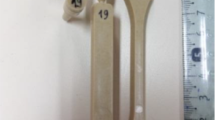Abstract
Evaluation of commercially available polyurethane resins used up to now for coating applications to develop non-biocidal wood preservation treatments has been conducted. A simple method of vacuum impregnation of these resins into beech wood (Fagus sylvatica L.) and pine wood (Pinus sylvestris L.) samples followed by varied curing processes at ambient temperature, 103, and 200 °C has been performed. Based on the analysis of weight percent gain before and after leaching, treatment resistance to leaching, anti-swelling efficiency, wettability and decay durability measured for treated and untreated blocks after leaching with the white-rot fungus Coriolus versicolor for both wood species and the brown-rot fungi Poria placenta and Gloeophyllum trabeum for pine wood, it can be concluded that such treatment can be considered as potential valuable non-biocidal treatments.



Similar content being viewed by others
References
Chattopadhyay DK, Webster DC (2009) Thermal stability and flame retardancy of polyurethanes. Prog Polym Sci 34:1068–1133
Dubey MK, Pang S, Walker J (2012) Changes in chemistry, color, dimensional stability and fungal resistance of Pinus radiata D. Don wood with oil heat-treatment. Holzforschung 66:49–57
Ekeberg D, Flaete PO, Eikenes M et al (2006) Qualitative and quantitative determination of extractives in heartwood of Scots pine (Pinus sylvestris L.) by gas chromatography. J Chromatogr A 1109:267–272
EN 113 (1996) Wood preservatives—determination of toxic values of wood preservatives against wood destroying basidiomycetes cultured on agar medium
ENV 1250-2 (1994) Wood preservatives—methods for measuring losses of active ingredients and other preservative ingredients from treated timber—part 2: laboratory method for obtaining samples to measure losses by leaching into water or synthetic sea water
Esteves BM, Pereira HM (2009) Wood modification by heat treatment—a review. Bioresources 4:370–404
Hakkou M, Pétrissans M, Gérardin P, Zoulalian A (2006) Investigations of the reasons for fungal durability of heat-treated beech wood. Polym Degrad Stab 91:393–397
Mitani A, Barboutis I (2014) Changes caused by heat treatment in color and dimensional stability of beech (Fagus sylvatica L.) wood. Drv Ind 65:225–232
NF EN 828 (1998) Adhesives—wettability—determination by measurement of contact angle and critical surface tension of solid surface
Pétrissans M, Gérardin P, El I, Serraj M (2003) Wettability of heat-treated wood. Holzforschung 57:301–307
Pfriem A, Dietrich T, Buchelt B (2012) Furfuryl alcohol impregnation for improved plasticization and fixation during the densification of wood. Holzforschung 66:215–218
Tjeerdsma BF, Boonstra M, Pizzi A, Tekely P, Militz H (1998) Characterisation of thermally modified wood: molecular reasons for wood performance improvement. Holz Roh- Werkst 56:149–153
Williams RC, Hale MD (1999) The resistance of wood chemically modified with isocyanates. Holzforschung 53:230–236
Woolley WD, Wadley ANNI (1972) Studies of the thermal decomposition of flexible polyurethane foams in air. Fire research note, No 951, p 36
Zhenhua G, Dong L (2007) Chemical modification of poplar wood with foaming polyurethane resins. J Appl Polym Sci 104:2980–2985
Acknowledegements
The authors gratefully acknowledge the Directorate General of Higher Education, Ministry of National Education of the Republic Indonesia (DIKNAS) for the master degree scholarship of Mahdi Mubarok. The authors want also to thank DYRUP S.A.S./PPG Industries for the financial support to this research. LERMAB is supported by a grant overseen by the French National Research Agency (ANR) as part of the “Investissements d’Avenir” program (ANR-11-LABX-0002-01, Lab of Excellence ARBRE).
Author information
Authors and Affiliations
Corresponding author
Rights and permissions
About this article
Cite this article
Mubarok, M., Hadi, Y.S., Suryana, J. et al. Feasibility study of utilization of commercially available polyurethane resins to develop non-biocidal wood preservation treatments. Eur. J. Wood Prod. 75, 877–884 (2017). https://doi.org/10.1007/s00107-016-1128-9
Received:
Published:
Issue Date:
DOI: https://doi.org/10.1007/s00107-016-1128-9



